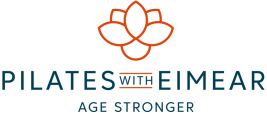There is so much to take on board in the early classes that there isn’t always time for me as instructor to ‘say’ it all; I find it’s better to get clients moving and for them to embody the principles along the way. But it helps to have some background knowledge, so here are some tips for those new to pilates:
All about the deep abdominals Getting in touch with the deep abdominals – especially the transversus abdominus (TA) – is the most important. This TA muscle is involuntarily fired up when you gently contract and lift your pelvic floor muscle. It’s a sensation of lifting the floor of the torso inwards and upwards, gently contracting all sphincter muscles to achieve this lift. When the deep abs are working, you are creating a very stable torso; the front body is pulled closer to back body.
The breath in is about creating space in torso and expanding rib cage to sides, to front and to the back. The breath out is about pulling low abs inwards and upwars as you contract sphincter muscles. Use every breath out (‘exxxxxhale’) as an opportunity to re-engage your abs and pull them in towards your spine with a little lift up though the pelvic floor.
Slow and with control Doing things slowly and with control yields more results than rushing the moves. The Pilates method was originally named Contrology (the study of control) to emphasise this very concept. Slower pace means you’re turning on stabilising muscles. You are thinking about which muscles you are using/isolating. You are conscious of creating isometric contractions as you push and lengthen and eccentric contractions as you decelerate and shorten muscles. Pilates is not a race.
Chin holding egg against chest A series of abdominal exercises takes place in a typical mat class with the head held off the floor unsupported, as in Ab Prep, Hundreds or Single Leg Stretch. In these challenging moves, it’s common either to jam the chin down to the chest (leading with the head) or to stare at the ceiling with the chin jutting up.
The chin should be a little closer to the chest than usual (slight head nod) as if you’re gently holding an egg between these two body parts. This head and neck position also helps to round the upper spine. The head nod precedes the lift of the shoulders off the floor. When lifting your head and shoulders, feel like something is pulling your chest towards your knees. Eye line to knees.
If your upper abs are weak, the correct position will be challenging. Avoid neck tension at all costs! A very valid option is to keep the head and shoulders down or support the head with your hands.
About ‘imprinting’
In pilates exercises when both legs are off the mat, you will often be asked to round your low back (‘imprint’) and gently get your lumbar vertebrae to make contact with the mat. This protects your lower back when the load is great. However, think of it as using your abs at front of your body to lengthen your back rather than jamming your vertebrae to the mat. If you can stabilise you low back without imprinting, when your legs are in the air, that is even better. At all costs, avoid your low back arching away from the mat when your legs are in the air!
Where are your shoulders?
Your shoulders should be anchored down your back. It’s very normal to overuse the neck muscles and take the shoulders up towards your ears. Hunched shoulders create undue tension in the neck and upper body. Focus on the shoulder blades sliding down your back, giving you an elegant swan-ike neck. Think of your head as a helium balloon and of your shoulders melting down your back.
Not just while on the mat
Take the sensations, body awareness and posture cues you get in your class with you into your week. Lessons learned on the mat can help you sit, walk, hike, bike and run better; they will also help you avoid back pain on long car trips and neck pain from spending too much time sitting at a computer.

